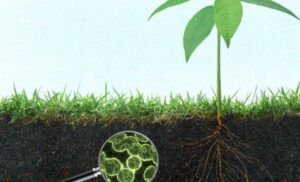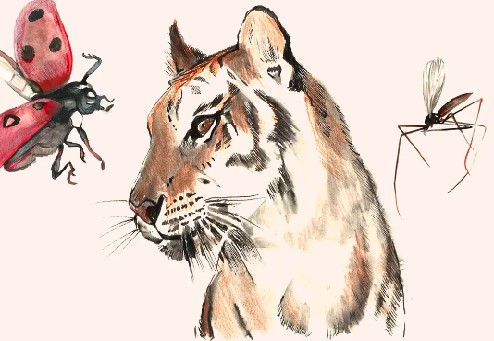The natural world is a complex and fascinating tapestry woven from a multitude of threads, among which animal and plant matter stand out for their diversity, importance, and the roles they play in ecosystems. This comprehensive guide delves into the intricacies of both animal and plant matter, exploring their characteristics, the vital processes they undergo, and their significance in maintaining the balance of life on Earth.

The Essence of Animal Matter
Animal matter encompasses all living organisms within the animal kingdom, from microscopic invertebrates to the largest mammals. These organisms share common characteristics, such as the ability to move independently at some point in their life cycle, the consumption of organic material for energy, and the capacity for growth and reproduction.
Key Functions and Processes
- Nutrition and Energy: Animals obtain energy through the consumption of plant matter, other animals, or both. This energy powers vital processes such as growth, movement, and reproduction.
- Respiration: The process of exchanging gases with the environment is crucial for obtaining oxygen necessary for cellular processes and eliminating carbon dioxide.
- Reproduction: Animal reproduction can be sexual or asexual, ensuring the continuation of species and contributing to genetic diversity.
Importance in Ecosystems
Animals play pivotal roles in ecosystems, including pollination, seed dispersal, controlling population sizes of other species, and recycling nutrients through decomposition. Their interactions with plants and other animals contribute to the dynamic balance of ecosystems.
The World of Plant Matter
Plant matter consists of all members of the plant kingdom, ranging from towering trees to microscopic algae. Plants are primarily characterized by their ability to perform photosynthesis, a process that converts light energy into chemical energy, providing the foundational energy source for most life forms.
Critical Processes and Characteristics
- Photosynthesis: This process transforms carbon dioxide and water into oxygen and glucose, using sunlight. It is the basis for the energy flow in ecosystems.
- Growth and Reproduction: Plants grow and reproduce through various mechanisms, including sexual reproduction (with seeds) and asexual reproduction (such as budding or fragmentation).
- Adaptation: Plants have adapted to a wide range of environments, from deserts to aquatic settings, developing specialized structures like roots, leaves, and stems to survive and thrive.
Significance in Ecosystems
Plants are fundamental to ecosystems, providing oxygen, food, and habitat for animals. They stabilize soils and climate, filter water, and absorb carbon dioxide, playing a crucial role in combating climate change.
Interdependence of Animal and Plant Matter
The relationship between animal and plant matter is marked by a profound interdependence, forming the basis of food webs and ecological balance. Plants provide animals with food and oxygen, while animals contribute to plant reproduction through pollination and seed dispersal and help cycle nutrients.
Pollination and Seed Dispersal
Animals, such as bees, birds, and bats, are essential for the pollination of many plants, facilitating their sexual reproduction. Additionally, animals disperse seeds through their feces or by carrying them on their fur, aiding in plant propagation.
Nutrient Cycling
Decomposers, including certain insects and microorganisms, break down dead animal and plant matter, returning nutrients to the soil and making them available for plant uptake, thus completing the nutrient cycle.
Conservation and Sustainability
The balance between animal and plant matter is delicate and increasingly threatened by human activities, including habitat destruction, pollution, and climate change. Conservation efforts focus on protecting habitats, preserving biodiversity, and promoting sustainable practices that ensure the health of ecosystems.
Biodiversity Preservation
Maintaining biodiversity is crucial for ecosystem resilience. Diverse ecosystems are better equipped to withstand environmental stresses and provide a broader range of services and resources to humanity.
Sustainable Practices
Sustainable agricultural and forestry practices, along with habitat restoration projects, are vital for the conservation of animal and plant matter. These practices aim to minimize environmental impact and maintain ecological balance.
The Role of Humans
Humans are intricately linked to the natural world, depending on animal and plant matter for food, medicine, and materials. Recognizing the value of biodiversity and the importance of conservation is essential for our survival and the health of the planet.
Environmental Education and Awareness
Raising awareness about the importance of animal and plant matter and the threats they face is crucial. Education can foster a sense of stewardship and encourage actions that support conservation and sustainability.
Technological and Scientific Advances
Science and technology play pivotal roles in conservation efforts, from genetic research that helps protect endangered species to satellite imaging for monitoring deforestation and habitat loss. These tools offer hope for understanding and mitigating human impacts on the natural world.
Conclusion
Animal and plant matter are the foundation of life on Earth. It supports complex ecosystems and providing essential services that sustain human societies. Understanding the intricacies of these materials, their interdependence, and their vulnerability to human impacts is crucial for their conservation. Embracing sustainable practices, fostering biodiversity, and advancing scientific research. We can ensure the health of our planet and the well-being of future generations. In this journey of exploration and conservation, each step is taken towards understanding and protecting our natural world. This is a step towards securing a sustainable future for all life on Earth.

